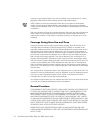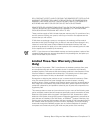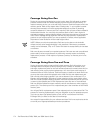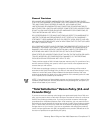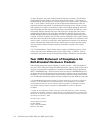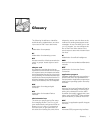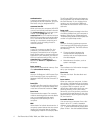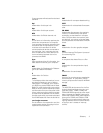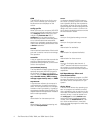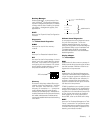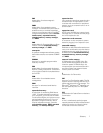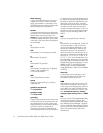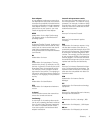
2 Dell PowerVault 720N, 740N, and 760N Users Guide
DXWKHQWLFDWLRQ
A security step performed by a domain
controller for the filers domain, or by the
filer itself, using its
/etc/passwd
file.
DXWRH[HFEDWILOH
When you boot your computer, MS-DOS
runs any commands contained in the text
file, autoexec.bat (after running any com-
mands in the config.sys file). An
autoexec.bat file is not required to boot
MS-DOS, but provides a convenient place
to run commands that are essential for
setting up a consistent computing envi-
ronmentsuch as loading mouse or
network software.
EDFNXS
A copy of a program or data file. As a
precaution, you should back up your
computers hard-disk drive on a regular
basis. Before making a change to the con-
figuration of your computer, you should
back up important start-up files, such as
autoexec.bat and config.sys for
MS-DOS or win.ini and system.ini for
Windows.
EDVHPHPRU\
Synonym for conventional memory. See
also conventional memory.
%$6,&
Acronym for Beginners All-Purpose Sym-
bolic Instruction Code, a programming
language. MS-DOS includes a version of
BASIC.
EDWFKILOH
An ASCII text file containing a list of com-
mands that run in sequence. Batch files
must have a filename extension of bat.
EDXGUDWH
Data transmission speed. For example,
modems are designed to transmit data at
one or more specified baud rate(s)
through the COM (serial) port of a
computer.
%%6
Abbreviation for bulletin board service. A
computer system that serves as a central
location for accessing data or relaying
messages by modem. For example, Dells
TechConnect BBS contains the latest ver-
sion of software such as video drivers and
the
Dell Directory
. If your system has a
modem, you can access the BBS and
download the most recent version of this
software.
EHHSFRGH
A diagnostic system message in the form
of a series of beeps from your computers
speaker. Refer to your
Diagnostics and
Troubleshooting Guide
for a complete dis-
cussion of system beep codes.
%,26
Acronym for basic input/output system.
Your computers BIOS contains programs
stored on a ROM chip. The BIOS controls
the following:
Communications between the
microprocessor and peripheral
devices, such as the keyboard and
the video adapter
Miscellaneous functions, such as
system messages
ELW
The smallest unit of information interpret-
ed by your computer.
EORFNVL]H
The size of a block. See also block and
striping.
ERRWURXWLQH
When you start your computer, it clears
all memory, initializes devices, and loads
the operating system. Unless the operat-
ing system fails to respond, you can
reboot (also called warm boot) your com-
puter by pressing <Ctrl><Alt><Del>;
otherwise, you must perform a cold boot
by pressing the reset button (if your com-
puter has one) or by turning the computer
off, then back on.
ERRWDEOHGLVNHWWH
You can start your computer from a dis-
kette in drive A. To make a bootable
diskette, insert a diskette in drive A, type
sys a:
at the command line prompt, then
press <Enter>. Use this bootable diskette



